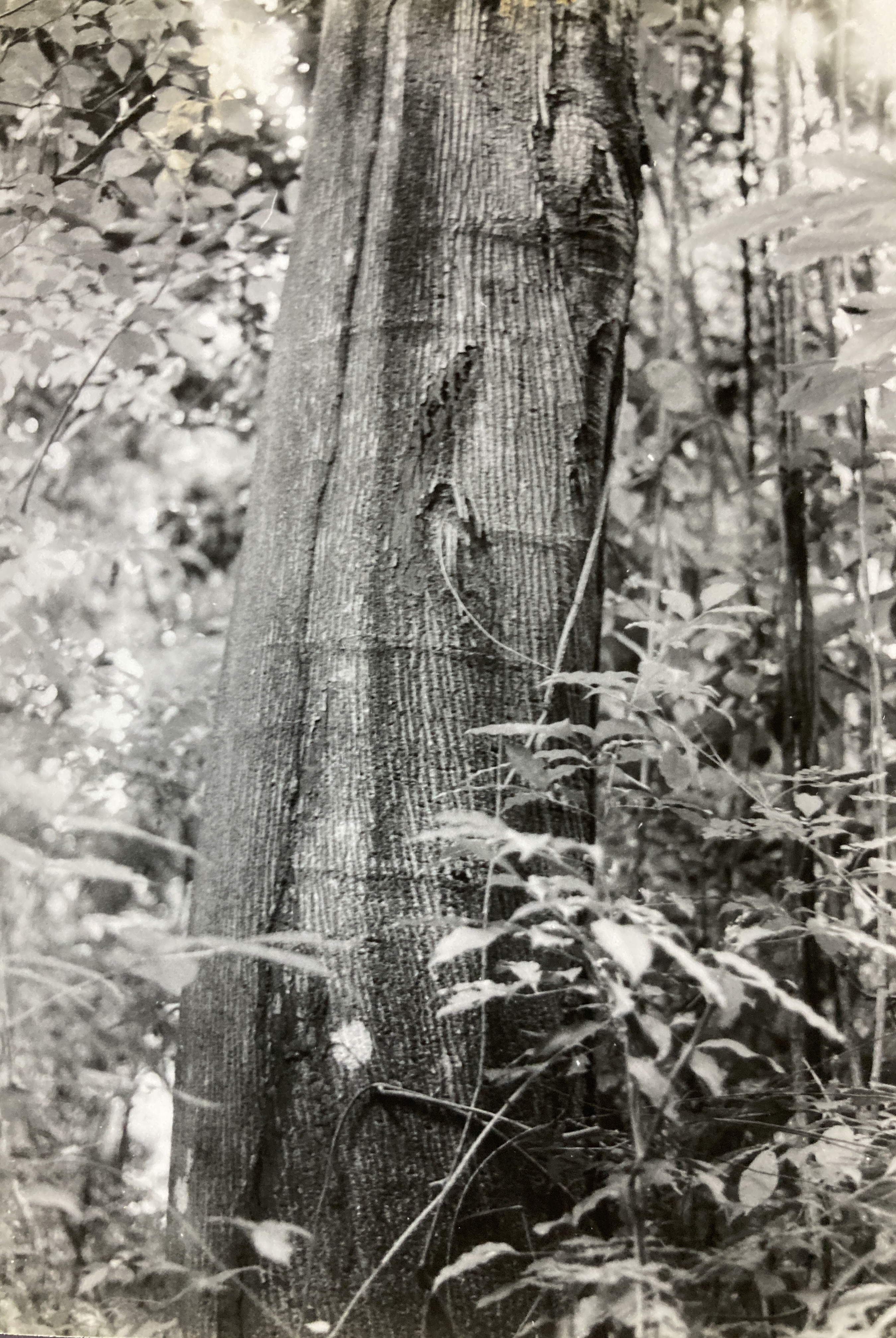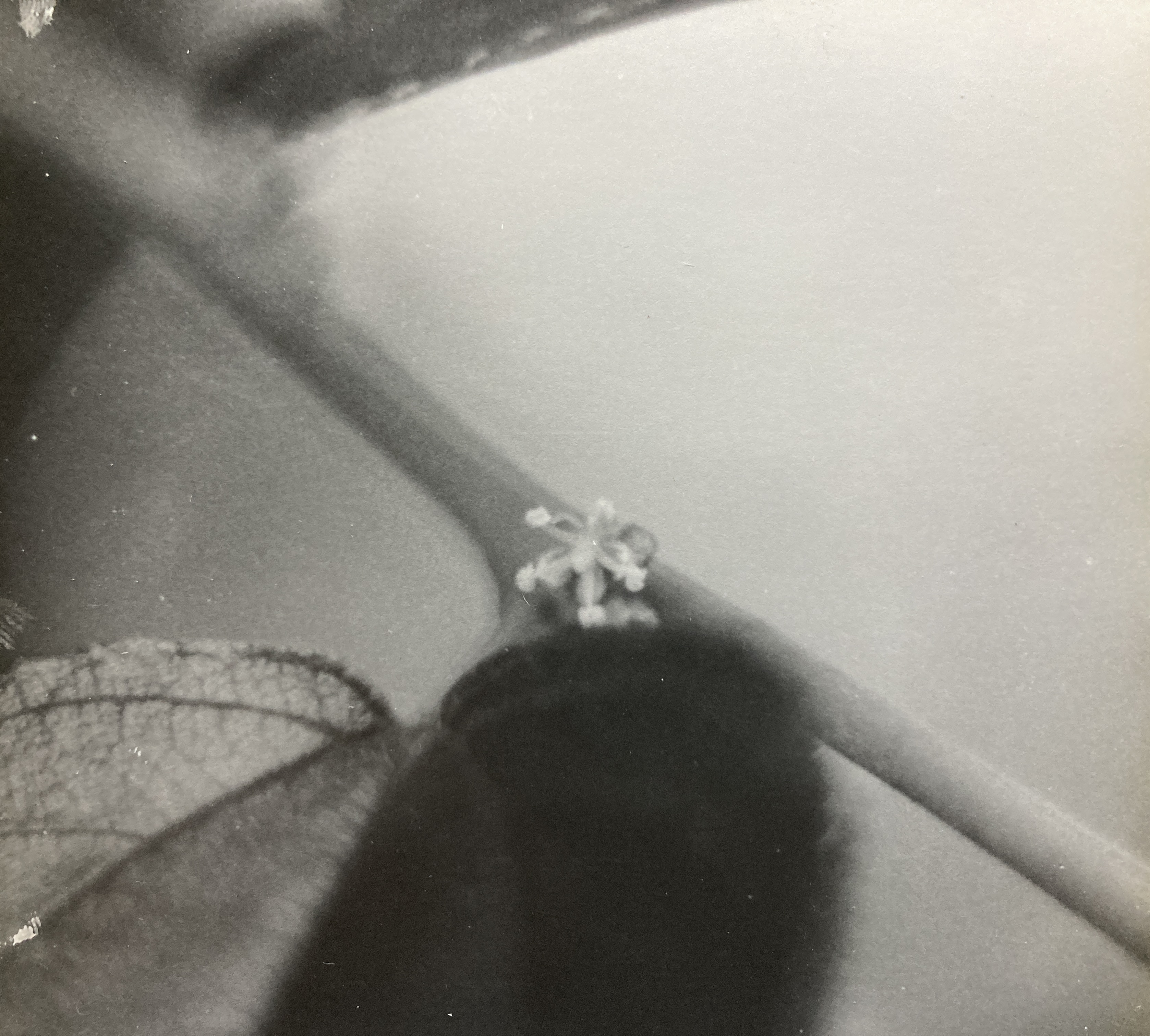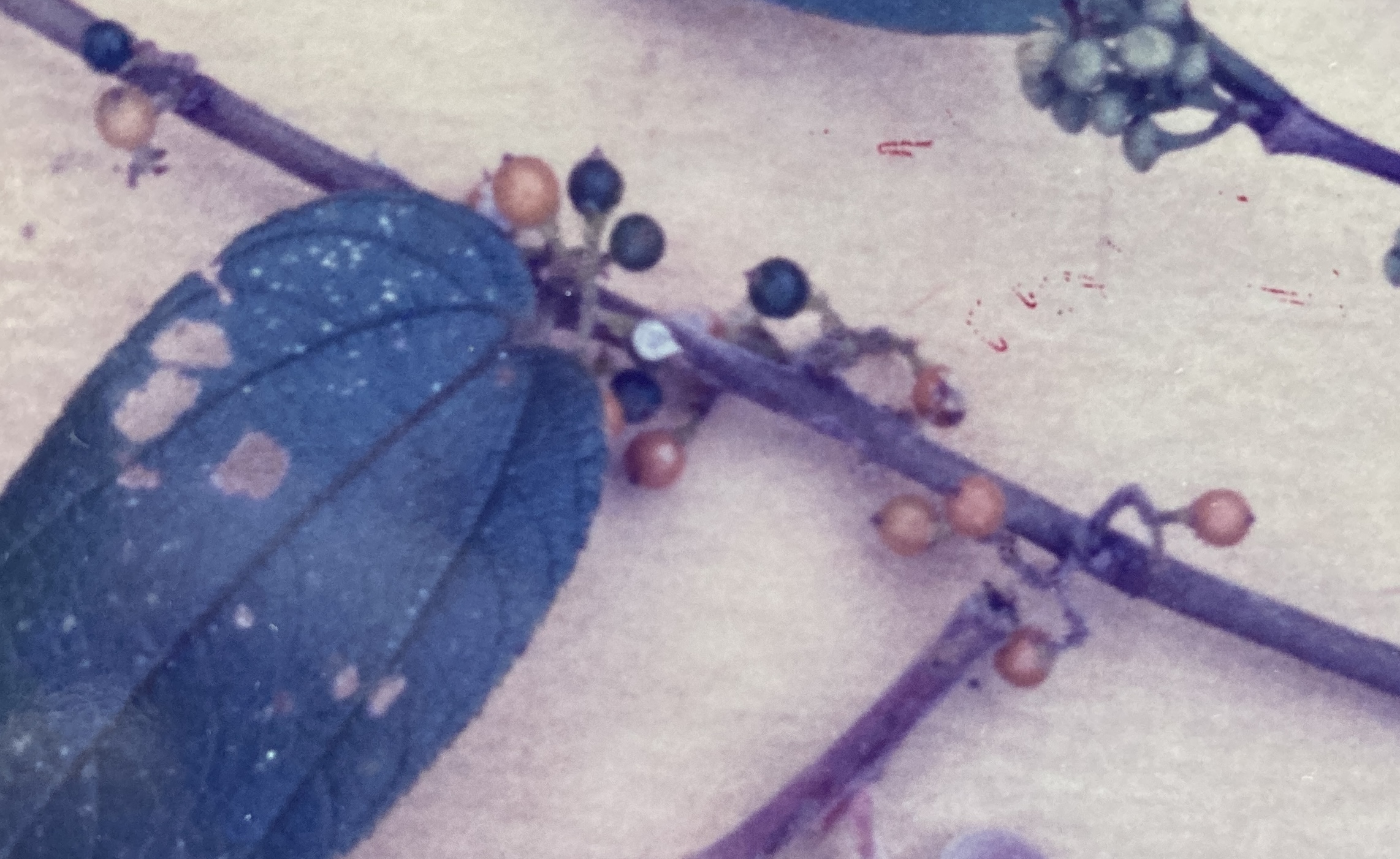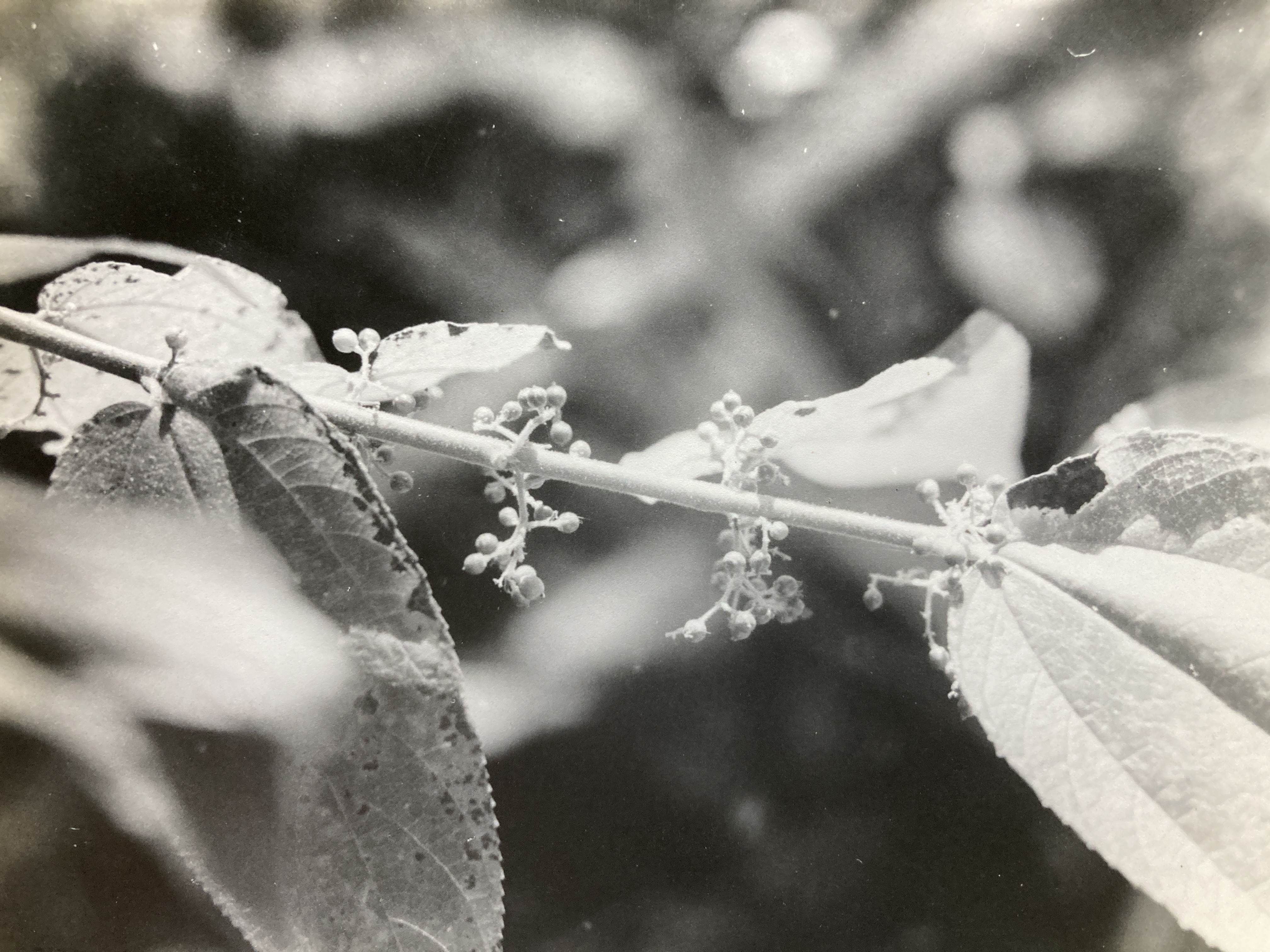Trema micrantha (L.) Blume
JUCO, CAPULIN BLANCO
Abundant evergreen canopy tree (20-30 m), most commonly observed as a small treelet associated with secondary vegetation. This aggressive, hardy, seemingly indestructible species seems to be able to survive anywhere a small patch of soil, tropical temperatures, and intense sunlight converge.
Description: Seen in its usual, treelet form, growing among secondary vegetation, Trema has a thin (10 cm), gray-barked trunk that is arched and bending. A Spartan set of long and wiry branches produce a narrow, open crown and this tree’s overall port is that of a scrawny, short-lived, weed-species. However, on occasion, one stumbles upon Trema amid the more ‘serious’ trees of the primary – or at least old secondary – forest. Here, individuals can attain canopy stature, measuring 30 m in height and 60 cm in diameter. Such relative giants have straight, cylindrical trunks topped with moderately thick crowns and their light gray bark is darkly streaked with closely spaced, fine, vertical fissures. Trema leaves (13 cm by 4 cm) are simple, alternate, and arranged in two tiers along the twigs. The finely serrate (serrulate) blades, supported by 1 cm petioles, are very rough and have the texture of fine sandpaper. Of deltoid shape, they possess wide, unequal (oblique) bases and gradually narrowing, wedge shaped apexes that terminate in long drip-tips. Leaf veins are palmate and they, along with the twigs, are covered with minute, tan pubescence.
Flowers (3 mm) grow in short (1-2 cm), dense, axillary panicles. Tiny, petal-less, and pale green, each simple blossom consists of five lobe-like, ridged sepals and a central pistil. Five anthers are present, attached to the ends of the sepals.
Fruits (3 mm) are small, spherical drupes that begin green but mature a bright orange color. Each contains a single, 1.5 mm seed. Trema fertility is closely tied to twig growth, flowers and fruits appearing immediately in the axils of all fresh leaves. Since growth occurs all year in this species – slowing but not stopping during the dry season – flowering and fruiting are continuous as well.
Similar Species: Trema micrantha has a leaf shape that is unique and identifying. The unequal base of the blade combined with its long, slowly tapering apex and rough texture are features that may be used in its recognition. Trema‘s predominately secondary growth habit and omnipresent flowers and fruits are equally helpful distinguishing characteristics.
Natural History: Trema micrantha is one of Manuel Antonio National Park’s most important secondary species. Hardy, aggressive, and resilient, it is one of the few trees that can be relied upon to reclaim deforested lands with severely eroded soil. Nevertheless, it is interesting that rare individuals do manage to live for long periods of time and can become components of mature stands of old-growth forest. Trema fruits are eaten and dispersed by birds.
Uses: Trema micrantha offers potential use as a pioneer species in reforestation efforts. Along with trees like Balsa (Ochroma pyramidale) and Guacimo (Guazuma ulmifolia), it can endure the harsh conditions present in a tropical pasture and help create the softer climate necessary for the survival of longer-lived, climax forest species. Allen (1956) says that the wood is pale brown or pinkish, soft, and not used. However, Trema bark fibers are employed in rope-making and its twigs can be woven into baskets.
Distribution: In Manuel Antonio National Park (MANP), Trema is found anywhere abundant sunlight reaches the ground – with the exception of sites characterized by excessively sandy soils. It habits clearings, secondary forests, road and trail margins, as well as steep hillsides. The species ranges from Mexico to Argentina and Brazil.




